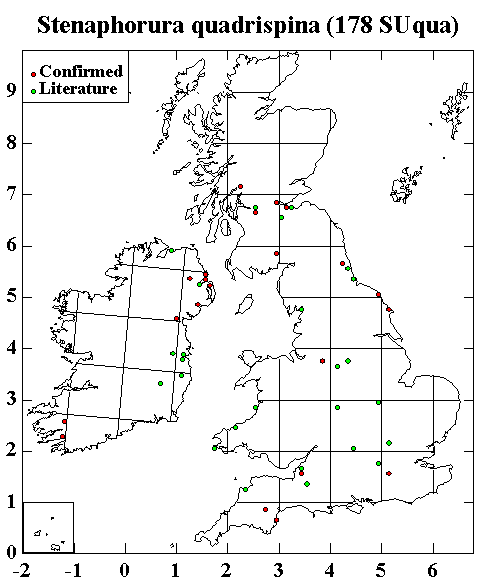|
Species of Stenaphorura are white and blind, possess four anal spines (Fig. 2), and have an elongate post-antennal organ (PAO) with 70 or more small vesicles. The foot does not possess an empodium. Stenaphorura quadrispina (Fig. 1) is the most widespread and common member of the genus. However, confusion with Stenaphorura denisi and Stenaphorura lubbocki in the past means that for records to be accepted, they must be supported by specimens. The longest specimen of Stenaphorura quadrispina I have seen was 1.2 mm in length.
The most easily-seen characters which distinguish Stenaphorura quadrispina are head with setae p1 shorter than p2 setae (shared with Stenaphorura lubbocki), seta m0 ABSENT on abd4 which has only one pseudocellus on each side (Fig. 3), seta m1 similar in length to p2 on th2 and th3 (Fig. 4), and setae ABSENT on either side of the m seta anterior to the anal spines (Fig. 2). These features may seem obscure but in cleared, well-orientated specimens viewed under phase contrast, they are unambiguous.
Back to main page
|
|









